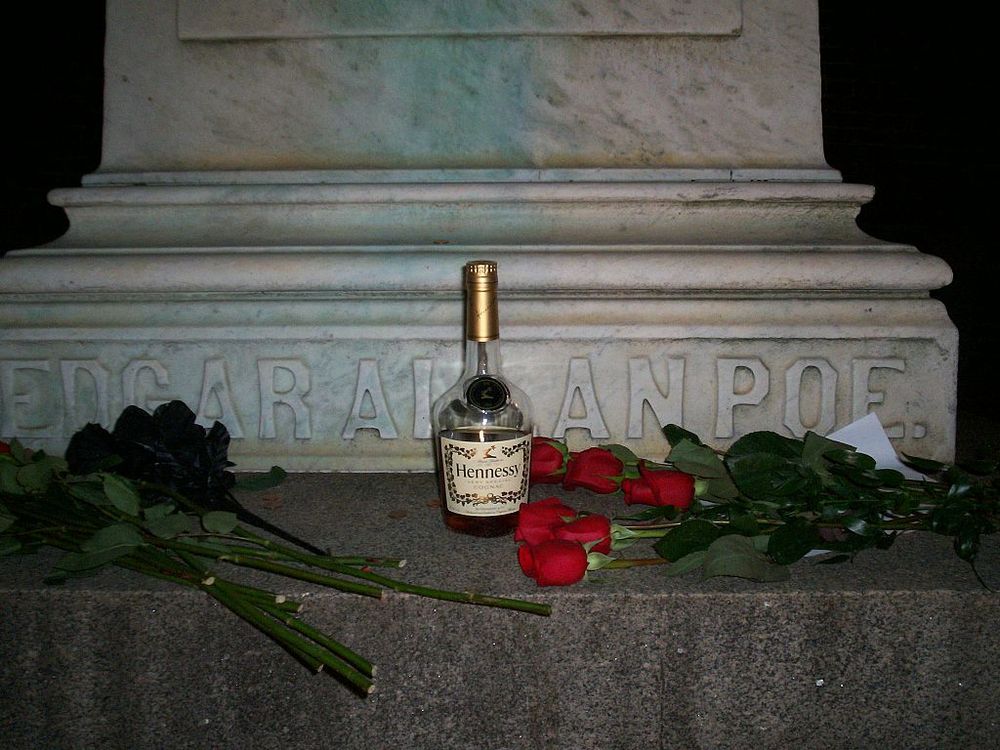The macabre attraction of Edgar Allen Poe and his works has reached far and wide over centuries. But the Poe Toaster is a testament to just how deep it runs in the veins of his followers.
The Poe Toaster was an anonymous entity that started the mysterious annual tradition of toasting Edgar Allan Poe at his grave on his birthday, with a bottle of cognac and three red roses. Shrouded in his own element of suspense, the toaster attracted vast attention over the years, keeping people peeking at the edges, though no one ever tried to discover his or her true identity.

The Grave
The famous American poet and writer died in 1849, leaving behind a legendary repository of literary works but buried only under sprouting weeds and blades of grass. Only some years later did George W. Spence have a sandstone burial made for him. It wasn’t until 1875 that a movement led by Miss Sara Sigourney Rice successfully erected a commemorative monument—worthy of the man’s remains—near where he lay in the Westminster Burial Ground.

Photo: chadirish/Flickr
A 100 Years Later
In 1949, on 18 January when Poe’s birthday was to begin at 12am, a stranger was spotted for the first time delivering the toasting essentials to Poe’s original grave. It was sometime around midnight, and the event probably came into notice only because it occurred on the 100th anniversary of his death. But many members of the church have claimed that the sightings had begun much earlier in the 1930’s. Either way, from then on the occurrence of the Poe Toaster became routine. He would always arrive between midnight and dawn of 19 January, wearing an all black outfit with a white scarf and a huge hat.
It was assumed that the three roses were for the persons buried underneath—Poe, his wife Virginia Clemm Poe, and his mother-in-law Maria Clemm—but the significance of the cognac remains undeciphered till date, for the spirit was never known to have been featured in any of Poe’s works. Yet many have waited each year for the custom to unfold, lurking on the sidelines of the graveyard by the Gothic church as the toast was left on the grave. One of them was Jeff Jerome, who unfailingly followed the proceedings of the tradition in person, and over time became the keeper of the notes that the toaster left with the objects. Jerome’s passion was common knowledge, and a note was left for him in 1993, which suggested that the toaster had probably passed away, for it said “the torch will be passed.”

Cognac and roses found at Poe's grave on January 19, 2008, likely left by an imitator. Photo: Midnightdreary/Wikimedia
Jerome became the curator of the Baltimore Poe House and Museum, and admitted to sometimes withholding minor notes and details from the public to keep would-be imitators out of the limelight. Even the sons of the real Poe Toaster, in his opinion, did not take the tradition seriously enough: The uniform was sometimes replaced with casual street wear, or the notes left were off target. These were two young men, often sighted at the grave probably only in honour of their father’s obsession. But in 2009, the sightings stopped completely. Over the years, many known as ‘Faux Toasters’ left similar paraphernalia by the grave, but none had the effect of the original fan, or well-wisher as he may have been.
So revered was the tradition, that in 2016, the Maryland Historical Society announced its comeback by calling for auditions for “Baltimore’s Next Poe Toaster”. The event has continued as a public celebration since then.
References
# The Edgar Allan Poe Society
# Smithsonian Magazine
# Washington Post












Comments
Post a Comment